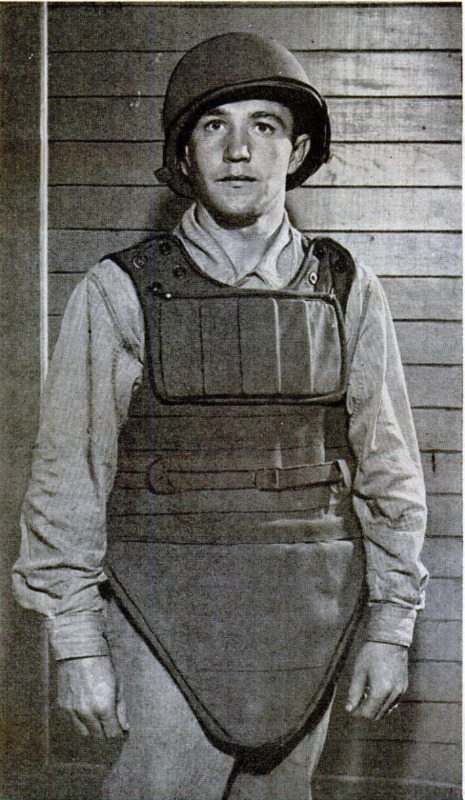-
Title (Dublin Core)
-
U.S. infantry fights in aluminum armor
-
Article Title and/or Image Caption (Dublin Core)
-
U.S. infantry fights in aluminum armor
-
extracted text (Extract Text)
-
BODY armor is reducing the number of
casualties among the American infantry-
men storming into the heart of the Jap
homeland.
Like the knight of the Middle Ages, the
GI is protected against the lance of battle
—in modern war, the shell fragment. The
armor is light and compact. It can be shed
in a twinkling and packed away in his kit.
Except under the most strenuous battle con-
ditions, when ease of movement is para-
mount, it is worn with comfort.
The adoption of body armor by the In-
fantry, just announced by the Ordnance
Department, means two things: fewer and
less serious wounds, and fewer replacements
of troops on the battlefield.
Eight percent of all battlefield casualties,
and half the deaths, are caused by shell
fragments (sometimes erroneously called
shrapnel). When the bursting charge of a
high-explosive shell detonates, the steel pro-
jectile is shattered into thousands of frag-
ments which are thrown unevenly over an
area proportionate to the size of the shell.
These fragments vary widely in size and
shape. Some are dustlike particles of steel;
others are jagged slivers weighing a small
traction of an ounce; comparatively few are
larger chunks of metal. They are projected
from the bursting shell at a speed of about
3,000 feet a second, but they lose velocity
quickly and seldom are traveling over 1,500
feet a second when they strike. No body
armor light enough for a soldier to wear can
protect him against a direct hit by a high-
explosive projectile, or even from sizable
fragments from a burst close to him, but
the body armor being supplied to our men
can and does protect them against a large
majority of fragments.
The GI's armor is designed specifically to
stop most shell fragments from penetrat-
ing the skin. Most wounds occur in the
torso. That's the area the armor protects.
Body armor is not new in this war. Bomb-
er crews have been using it in the form of
“flak suits.” These are easy to wear be-
cause a man in a bomber doesn’t move
around much. Armor for the warrior with
only his own feet for mobility is something
else again. It has to be light. It has to
leave his movements unrestricted. It has
to be styled so that it can be doffed in-
stantly in an emergency.
Army Ordnance produced just that kind
of armor. Ordnance went further. By a
series of painstaking tests it determined
how much velocity the little pieces of metal
plate, backed by quilted pads of multiple-
layer nylon, would stop. While the infan-
tryman’s armor is considerably lighter than
that in a flak suit, it is similar in design.
It is a vest weighing 12 pounds that af-
fords protection for both the front and the
back of the soldier. The vest consists of
aluminum-alloy plates measuring three by
five inches—lighter than manganese steel
but equally resistant—backed by the nylon
pads. Shell fragments that penetrate the
plates either are stopped or their velocity is
greatly retarded by the nylon fibers. Hit a
pillow with your fist. Feel it yield reluctant-
ly. That's what happens when a shell frag-
ment penetrates the armor metal and hits
the fabric.
To the vest is attached a small, flexible
apron, weighing only a pound and a half
and also made of quilted nylon, that pro-
tects the lower half of the abdomen.
A jerk on two shoulder straps instantly
jettisons both pleces. Vest and apron may
be folded compactly and carried in a pack.
A man jumping from a foxhole and legging
it across terrain under fire doesn't want
to be encumbered. But a man standing in
a landing barge and preparing to hit the
beach, and even one crossing a beach under
a hail of bullets and artillery shell frag-
ments, finds his body armor the shield and
buckler of modern war.
In the development of infantry armor,
Ordnance went directly to the experience
tables of the Air Forces for information.
The Eighth Air Force made the first at-
tempts to protect its flyers against the frag-
ments of flak bursts in 1943 when strategic
bombing was being stepped up in the face
of determined opposition by German fight-
ers (armed with cannon as well as machine
guns) and antiaircraft batteries. Casual-
ties among bomber crews were becoming
serious.
A type of body armor had been developed
for infantrymen in World War I but it was
too heavy to permit a man to move as fast
as he had to in combat. The Eighth Air
Force modified one of the 25-year-old suits
and placed orders for a limited quantity.
They worked. Casualties dropped 60 per-
cent.
Then samples were sent home to Ord-
nance. Col. Rene R. Studler, chief of the
Small Arms Development Division, was
given the job of improving the suit and
getting it ‘into quantity production. He
found that while it often was saving its
wearer from death and wounds, it did show
a lot of holes from shell fragments. Colonel
Studler pondered that one. Then he made
a decision that was to have a profound ef-
fect on body-armor design. It was this:
the number of holes produced could be dis-
regarded. It was what the shell fragments
did after they made the holes that was im-
portant.
Apparatus for testing body-armor ma-
terial was devised and installed at Aber-
deen Proving Ground, Maryland. From
what was learned in detonating explosives
statically an improved flak suit was con-
structed. It was only a step from a better
flak suit to an infantryman’s armor.
Pilot models for body armor, and for
steel helmets as well, are made just where
you would imagine they would be made—in
the armor shop of the one place in the
United States where an intimate study of
devices for protecting the body against
wounds has been carried on for many years.
It is New York's Metropolitan Museum of
Art. The Museum contains magnificent
samples of armor going back to the times
of the ancient Greeks and Romans. Some
of the models are fashioned with the same
kind of planishing hammers as were used to
repair the dented steel harness of King
Richard the Lion-Hearted, back in the days
of the Crusaders.
Improvement of all body armor, includ-
ing that used by flyers, is going on all the
time. Two standard vests for airmen, made
of overlapping two-inch-square plates of
Hadfield manganese steel in fabric pockets
attached to a backing of nylon canvas, now
are being produced. One of them, worn by
bomber navigators, bombardiers, and gun-
ners, weighs 17% pounds, and protects both
the front and the back of the wearer's torso.
The other, worn by pilots and copilots
whose backs are protected by armor-plate
seat backs, weighs 7% pounds and protects
only the front of the body. Pilots and others
who normally remain seated during flight
wear groin armor which weighs 15% pounds
and gives maximum protection to the abdo-
men and thighs. Other crew members wear
either of two models of armor aprons, one
of which weighs about seven pounds and
the other about five pounds. The pieces
making up the various protective combina-
tions are attached to one another by quick-
release fasteners which are connected by a
rip cord. A single jerk frees the wearer.
One innovation now being tested in serv-
ice is flyers’ armor that combines an in-
creased area of protection with an im-
portant decrease in weight.
Seventeenth-century military men who de-
cided that improvements in firearms had
made armor a useless and dangerous en-
cumbrance must be stirring uneasily in their
graves.
-
Contributor (Dublin Core)
-
Arthur Grahame (article writer)
-
William W. Morris (photographer)
-
Hubert Luckett (photographer)
-
Language (Dublin Core)
-
eng
-
Date Issued (Dublin Core)
-
1945-09
-
pages (Bibliographic Ontology)
-
73-77,234
-
Rights (Dublin Core)
-
Public domain
-
Archived by (Dublin Core)
-
Sami Akbiyik
-
Marco Bortolami (editor)
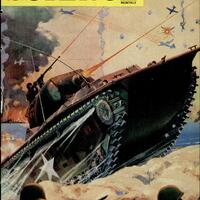 Popular Science Monthly, v. 147, n. 3, 1945
Popular Science Monthly, v. 147, n. 3, 1945
 Screenshot 2023-02-03 114713.png
Screenshot 2023-02-03 114713.png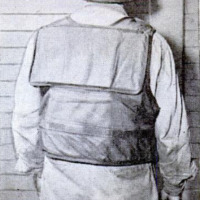 Screenshot 2023-02-03 114724.png
Screenshot 2023-02-03 114724.png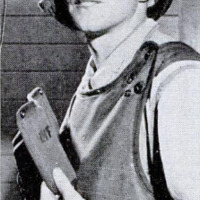 Screenshot 2023-02-03 114738.png
Screenshot 2023-02-03 114738.png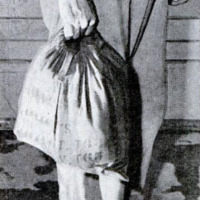 Screenshot 2023-02-03 114749.png
Screenshot 2023-02-03 114749.png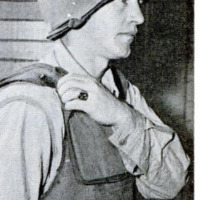 Screenshot 2023-02-03 114801.png
Screenshot 2023-02-03 114801.png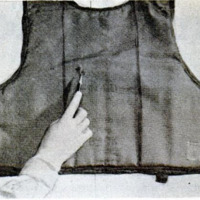 Screenshot 2023-02-03 114812.png
Screenshot 2023-02-03 114812.png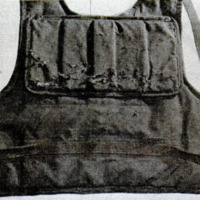 Screenshot 2023-02-03 114822.png
Screenshot 2023-02-03 114822.png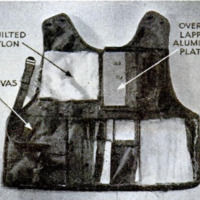 Screenshot 2023-02-03 114833.png
Screenshot 2023-02-03 114833.png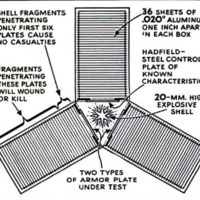 Screenshot 2023-02-03 114843.png
Screenshot 2023-02-03 114843.png
